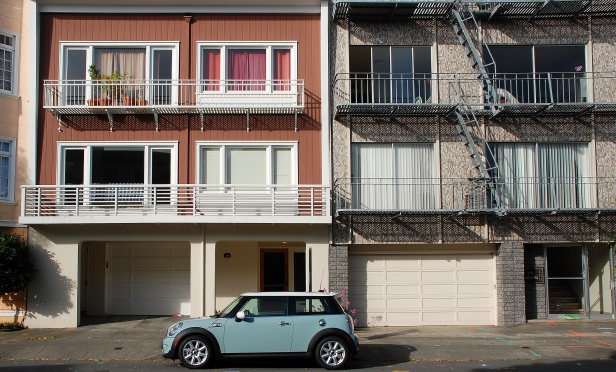 Commercial buildings are required to meet certain standards in the event of an earthquake.
Commercial buildings are required to meet certain standards in the event of an earthquake.
SAN FRANCISCO—In regions of the country where seismic activity is high, commercial buildings are required to meet certain standards to prevent and minimize damage in the event of an earthquake. In California, existing buildings that do not meet these standards may be subject to local mandatory seismic retrofit ordinances and must be upgraded in order to comply.
In this exclusive, Roy Anderson, vice president of seismic risk services at AEI Consultants, discusses the requirements for seismic upgrades in California, how building owners and managers can ensure that properties are in compliance and safe, and the potential impact on buildings and communities if proper seismic retrofitting is not accomplished.
GlobeSt.com: What are the basic requirements for seismic upgrades in California?
Anderson: California currently leads the way with seismic retrofit ordinances, although other seismically active states are following. Buildings most in need of seismic upgrades in California are typically located in areas with large populations such as Los Angeles and the Bay Area. These upgrades are usually performed on older buildings with higher potential damageability and stability issues, including wood-frame (a.k.a. soft-story) properties with tuck-under parking, steel moment-resisting frame properties (pre-Northridge) constructed before 1997, non-ductile moment-resisting concrete frame buildings constructed before 1976, concrete tilt-up buildings constructed prior to the 1994 Northridge earthquake, pre-cast buildings and unreinforced masonry buildings constructed before 1934.
One way that owners and other stakeholders can determine if and to what degree a property is vulnerable is through performing a seismic risk analysis. For example, AEI provides seismic risk assessment reports prepared in accordance with American Society for Testing and Materials Standards E2026-16a and E2557-16a. These reports summarize the risk of structural damage to a building due to the vibratory and lateral motion caused by an earthquake.
GlobeSt.com: What are some actionable steps for building owners and managers to take to ensure that their properties are both in compliance and truly safe?
Anderson: If their building falls into any of the above-mentioned risk categories and has not yet been retrofitted, landlords and managers should schedule a site visit with a trusted expert in seismic services. The expert will complete a visual assessment of the property, determine site-specific seismic hazards including the scenario peak ground acceleration, evaluate those hazards, provide an estimation of building damageability and determine the stability of a building to withstand potential aftershocks.
Some risk factors that are taken into consideration during the assessment are age of the building and construction quality; excessive cracks; settlement or other observable damage; inadequate lateral support at crawl-space pony walls and tuck-under parking; excessive wall openings; irregularity in shape or vertical or horizontal stiffness; large, unusual, non-structural building elements; soft-story at any level including tuck-under parking or commercial areas of the building; minimum distance between adjacent structures to identify potential pounding; and large openings in floor and roof diaphragms including skylights, light wells and clerestory openings.
The results of these assessments and evaluations will aid in determining if a retrofit is required or recommended. If it is necessary, the owner or manager can take steps toward having the upgrade performed. A trusted consultant can help guide these next moves as well to help ensure a seamless process.
GlobeSt.com: What are the liabilities/potential of impact on the resilience of buildings and, by extension, communities if proper seismic retrofitting is not accomplished?
Anderson: Buildings that are not properly seismically retrofitted are a potential life-safety hazard for anyone in or around the building. If an earthquake occurs and the building is significantly damaged or collapses due to non-compliance with seismic standards, people could be injured or killed. This presents a potential financial and legal liability for landlords and property managers. Catastrophes like this can also be emotionally and economically damaging for the communities in which such tragedies occur. People might be fearful that buildings in those communities are unsafe and not wish to visit or transact business in those communities.
In addition, even if an earthquake doesn't occur, governmental agencies such as Fannie Mae may place funding restrictions on buildings that are not in compliance with seismic codes, mandating that building-stability issues be resolved as a condition of funding. These restrictions can cost landlords and buyers important financing opportunities and could potentially kill sales transactions involving non-compliant properties.
GlobeSt.com: What other trends are you seeing in seismic retrofits that are coming to the forefront in the Bay Area?
Anderson: The Bay Area is a region where many seismic retrofits on older buildings are taking place. It is a population-dense area where commercial space is in high demand and ground-up construction is extremely expensive, so redevelopment is common, presenting an ideal opportunity for landlords to have seismic upgrades completed on their properties. This trend will likely continue for as long as there are still properties in the Bay Area that are not in compliance with current standards.
International consulting firm AEI Consultants provides seismic risk assessments to estimate the risk of damage to properties in regions of high seismicity and performs the design seismic retrofitting when needed. These services include environmental, property and facility assessments, zoning and energy consulting, site investigation and remediation, industrial hygiene, and construction risk management.
© Touchpoint Markets, All Rights Reserved. Request academic re-use from www.copyright.com. All other uses, submit a request to [email protected]. For more inforrmation visit Asset & Logo Licensing.







